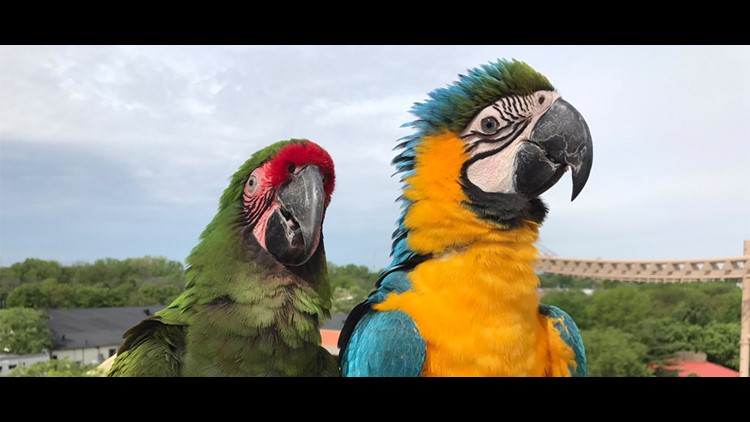The Indianapolis Zoo is once again breaking new ground with its latest exhibit - one that brings the animals out of their enclosures and into the part of the zoo normally reserved for people.
The "Magnificent Macaws" appear several times a day at the new Bicentennial Pavilion, which is near the zoo's main entrance. Macaws are native to South America, but these birds were hatched in Orlando a year ago. Keeper Tim Van Loan has been with them since the beginning.
"These bird are all parrots," he said, "but not all parrots are macaws. Macaws are the largest types of parrot."
And they are beautiful. Red. Green. Blue. Yellow. Orange - and combinations of all those colors.
The Zoo has 50 macaws, broken down into three flocks: the Pacers, the Racers, and the Pit Crew. They are one of the most intelligent bird species and they tend to break into pairs of very small groups known as "flight buddies." The familiarity gives them comfort and keeps them coming back - to the public display area and their "release" - the area where they spend their down time.
[article_tokens:carousel]
Julie Bowman and her family recently moved back to Indianapolis after spending a few years in Grand Rapids. She was seeing the updated zoo and the macaws for the first time.
- RELATED: Indianapolis Zoo website
"It is amazing. Even when you are watching through the dew and you can see them fly overhead, it's just an unbelievable experience. You just don't see that every day," she said.
Her four children loved it, too.
"I like how they fly and they're so pretty - and I just love the way they fly," Bowman's daughter Hadley gushed.
The zoo is planning to send the macaws to Orlando for the winter for more training and they will be back in Indianapolis next spring. After that, they will permanently become Hoosiers, wintering in their indoor enclosure.
When they're out, the macaws have a job to do. Van Loan says he hopes people react to the macaws this way, "to be in awe of how beautiful they are, that's the big thing, but that hopefully leads people to understand the importance of protecting macaws, but also birds here in Indiana."
The Indianapolis Zoo is one of just a handful of places that have trained macaws to leave their enclosure for the open skies and they are likely to be a feature at the Indianapolis Zoo for a long time.
"They can live 60, 70, maybe even 80 years if they are taken well care of," said Van Loan. "You know, we're giving them exercise every day, they're getting a really healthy balanced diet and all that combined means they are on track to live a great, healthy life."
Which means that your children and grandchildren may be bringing their kids here to enjoy the same birds for years to come.
To learn more about the macaws, and the other animals in the Indianapolis Zoo's "Forest" area, click here.



